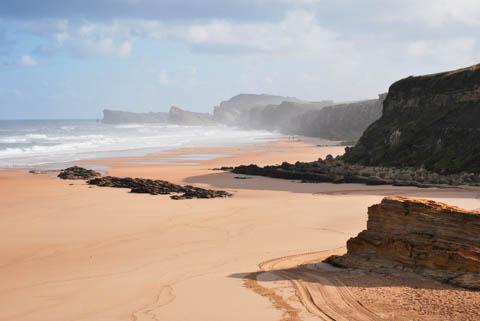Bordered by mountains and sea, Cantabria is a region of natural beauty. Picos de Europa National Park, for example, is home to a stark mountain landscape on the inland side with rare species like the Cantabrian brown bear, wolves, and lynxes. This is the region for adventurous explorers and nature lovers looking to experience some of Spain's untouched environments. Cabárceno Nature Park and Zoo is another unique setting where you can see a variety of species including tigers, elephants, and reptiles.
With a history dating back to the Upper Paleolithic period, Cantabria is also well-known for its caves. The most significant site for cave paintings is that in the cave of Altamira, dating from about 37,000 BC. It has been declared, along with nine other Cantabrian caves, as a World Heritage Site by UNESCO. Some of the others include the Monte el Castillo Caves, the Covalanas Caves, El Pendo Caves, Hornos de la Peña Caves, and El Soplao Caves.
In Cantabria's cities, like Santander, architecture and museums occupy much of the sight-seeing. The most emblematic sight of Santander is the Magdalena Palace which was once a summer residence for the Spanish king. Located on a peninsula of the same name, the palace stands in beautiful stone masonry overlooking the sea. Other architectural sights include a handful of churches and public buildings, historic streets and squares, and a number of peaceful parks.
If it is outdoor adventure you seek, Cantabria has a full range of activities from hiking or skiing in the mountains to swimming and watersports along the beaches of the coastline. The Primera de El Sardinero is the most famous beach of Santander, while Somo Beach just outside of Santander is more secluded and less crowded than beaches in Santander. Some others include Playa de El Puntal, Playa de Bikinis, Playa de Covachos, and many more.
If you prefer to get lost in the history of the region, spend your days wandering city streets and villages, exploring museums, or hopping on a tour for a more guided experience.
And then there are the local festivals, fairs, and celebrations held in different cities and villages throughout the region. All over the region, cattle and typical products fairs are celebrated regularly. Some of these include La Vijanera or Winter Carnival celebrated during the first Sunday of the year in Silio, Carnaval marinero or Sailor Carnival in February in Santoña where townsfolk dress up as fish, and La Folía in April in San Vicente de la Barquera where a parade of local fishing boats follows one with a statue of the Virgin. Then there is also Cantabria Day held on the second Sunday of August in Cabezon de la Sal. Festivities include traditional Cantabrian music, ceramics fair, local foods, bolo palma championships, ox dragging contests, and public speeches. These and many more make up the local celebrations.
A nice way to explore destinations in Cantabria is with local tours that last just a few hours. This way you can see as much as possible in an efficient way with knowledgable guides. Prices vary by the type of activity or tour, the dates, and the size of the group. Here are a few of the highest rated tours by previous visitors:
- Private Guided Walking Tour of Santillana del Mar for $217 details
- Private Walking Tour of Altamira and Neocave Museum for $241 details
- From Bilbao: Villages of Cantabria Private Tour with Lunch for $292 details
 Cantabria Coastline, Spain
Cantabria Coastline, Spain

 Budget Your Trip is all about finding out how much everything costs so that you can travel cheaper and longer. Created by avid travelers Laurie and Bryan, our goal is to help you plan your next trip on the right budget. With average daily travel costs that are calculated from the budgets of real travelers, plus an analysis of hotel and tour prices, you can find out how much money you need to plan your next adventure. We also have plenty of travel advice, accommodation reviews, and activity suggestions.
Budget Your Trip is all about finding out how much everything costs so that you can travel cheaper and longer. Created by avid travelers Laurie and Bryan, our goal is to help you plan your next trip on the right budget. With average daily travel costs that are calculated from the budgets of real travelers, plus an analysis of hotel and tour prices, you can find out how much money you need to plan your next adventure. We also have plenty of travel advice, accommodation reviews, and activity suggestions.